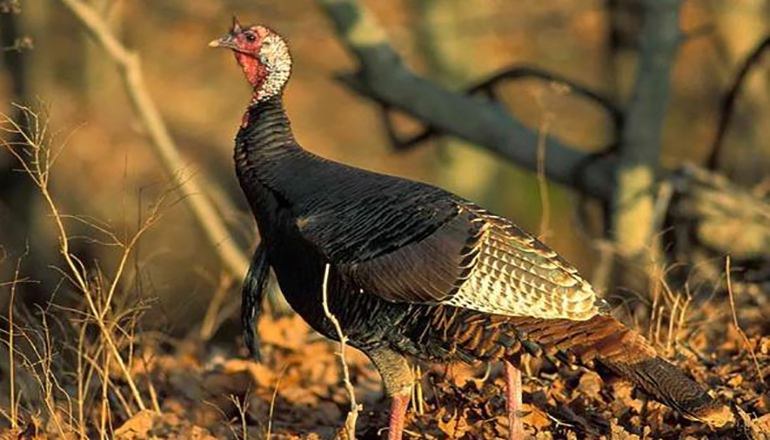Missouri turkey hunters can expect a more challenging spring season overall according to the Missouri Department of Conservation. The spring turkey hunting season starts with a youth-only weekend April 7-8. The regular spring season runs April 16 through May 6.
Although the good hatches of 2011, 2012, and 2014 helped to bolster turkey numbers in much of Missouri from a low point during the late 2000s, poor production in recent years will make for a more challenging 2018 spring turkey season.
“A great deal of what makes for a good spring turkey season depends on the hatch two years prior because it affects the number of two-year-old gobblers on the landscape,” MDC Turkey Biologist Jason Isabelle said. “Young gobblers are not associated with hens as often as older dominate birds and are more likely to respond to hunters’ calls.”
Unfortunately, poor production throughout the state during 2016 will result in fewer two-year-old gobblers during this year’s spring hunting season. Isabelle also notes that last year’s poor hatch will result in fewer jakes, or one-year-old male turkeys, especially in southern Missouri where turkey production was the poorest.
“I think hunters will notice a reduction in the number of jakes they’re used to seeing,” he said.
Isabelle noted that because most hunters prefer to harvest adult gobblers, the effects of last year’s hatch won’t have as much of an effect on the 2018 harvest total as it will during next year’s season.
Considering the prospects for the 2018 spring season, hunters should be prepared to put in a bit more effort to be successful this year.
“When turkey numbers are down, it becomes even more important to do your homework,” said Isabelle. “Hunters should get out to their hunting areas as much as possible before the season to listen for birds gobbling at daybreak.”
Isabelle notes that it gives hunters an advantage to know where turkeys are spending most of their time after they fly down. Using binoculars to spot turkeys feeding in open areas or looking for signs of where turkeys have been feeding in the timber can help hunters be in the right area when the hunting season gets here.
Although this year’s spring turkey season is shaping up to be more difficult than in the recent past, Isabelle notes that this isn’t the first time hunters have had to face challenging prospects.
“Turkey production is rarely consistent through time,” said Isabelle. “We’re going through a tough stretch of poor production right now, just like we did during the late 2000s.”
Isabelle notes that these fluctuations in turkey production and population numbers are a normal part of the dynamics of the population.
“With a couple years of good production, turkey numbers will rebound”, said Isabelle.
Get More Information
Find detailed information on harvest limits, allowed hunting methods, hunter education requirements, permits, MDC hunting areas, tagging and checking procedures, regulations and more in MDC’s 2018 Spring Turkey Hunting Regulations and Information booklet available from MDC offices and nature centers, other places where permits are sold, and online at http://bit.ly/2tL5SWa. For more information about spring turkey hunting, visit MDC’s website at http://bit.ly/2mVaDnK.
Hunter Safety
Isabelle stressed that hunters can easily avoid the main cause of turkey-hunting incidents—mistaking, or being mistaken by another hunter for wild game.
“Each year, most turkey hunting incidents typically involve hunters who fail to positively identify their targets,” said Isabelle. “Unless you are absolutely certain that what you’re looking at is a wild turkey, remember that any movement you see or any sounds you hear while you’re hunting could be another hunter.”
He also advised hunters to wear some hunter-orange clothing when moving through the woods or fields, particularly when hunting public land.
“Bringing along an orange hat is an easy way to stay safe”, said Isabelle. “Wear it when you’re moving and switch it for your camouflaged hat when you sit down to work a bird.”
Isabelle also noted that many turkey hunting incidents involve members of the same hunting party. If you’re hunting with someone else and you split up, be certain you know where your hunting partner will be at all times.







